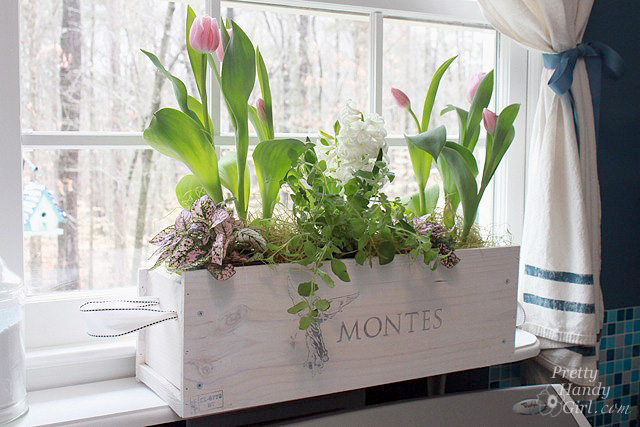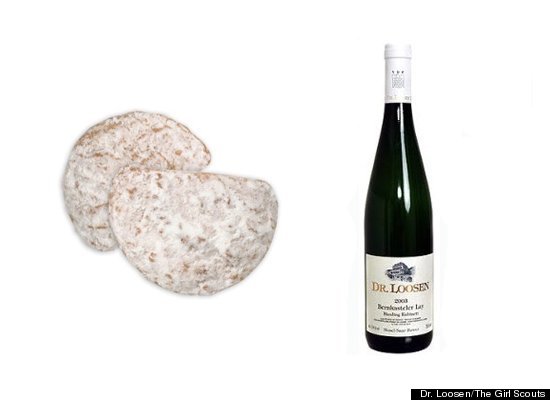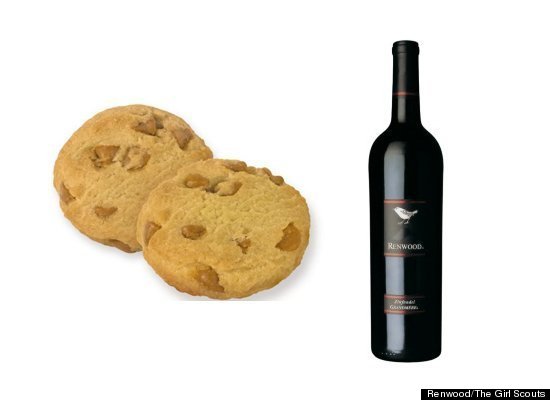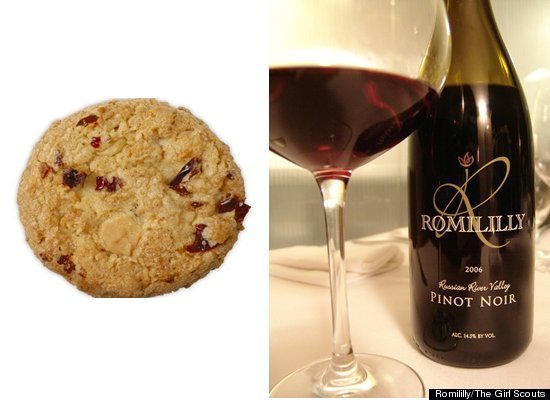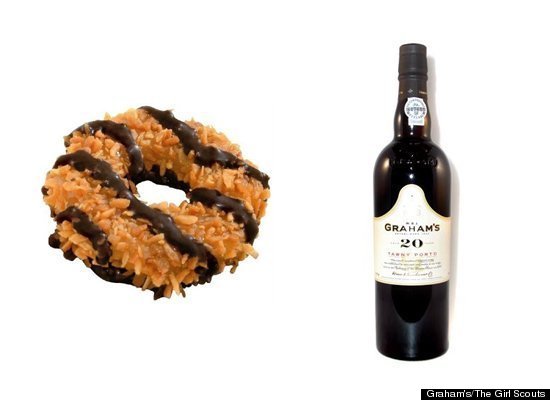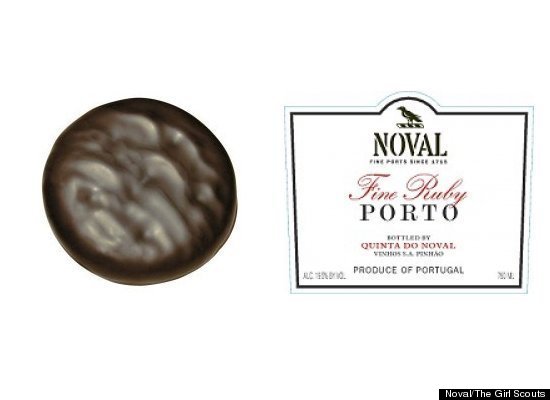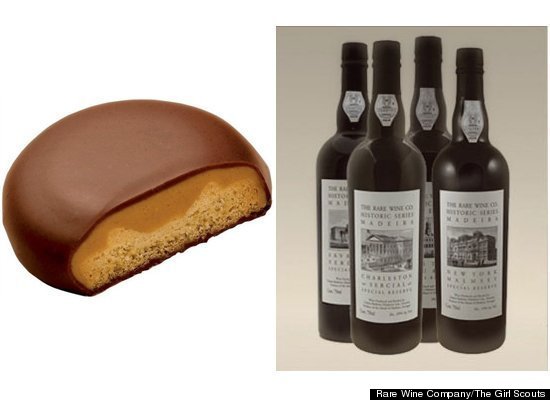Have you ever thought you couldn't handle red wines? Do your friends drink Cabernet Sauvignon and you have a hard time consuming it? Do red wines [from CA, maybe] give you headaches? Then maybe you're the perfect candidate for light- or medium-bodied red wines!
(Photo from Google Images)
Our journey of "Light- and Medium-Bodied Red Wines" includes several regions, styles, and grape varieties. I group these two "classes" together, as I think it is difficult to differentiate "light-bodied" vs. "medium-bodies" especially with reference to red wines. The term "light" and "medium" again refer to the level of "body" or "mouthfeel" in the wine.
Perhaps some of these wines never seemed like opportunities to you before, but I encourage you to give them a try. You may be surprised at what you find:
Beaujolais and Beajolais Nouveau/Gamay and GrenacheBeaujolais Nouveau (pronounce "bow-joe-lay new-voe") is released in the U.S. on the third Thursday of November. It is made in the Beaujolais region of France from the Gamay grapes that are fermented by a process known as carbonic maceration. The fermentation process of carbonic maceration makes a very delicate, light, floral, pear-drop smelling red wine. This style was made famous by Georges Duboeuf, a producer in Beaujolais. These wines are packaged in highly colorful botttles, some are actually screw-capped now, and although they used to be fairly cheap, their price has increased steadily over the past 5 years to about $12 per bottle. I encourage all to try Beaujolais Nouveau at least once in their lifetime! [But only choose this wine when it comes out in November. As it's light and delicate, it's not meant to age in your wine cellar for more than a few weeks.] As with any wine, the vintage year is always hit or miss. I have had years where this is a fabulous, light wine enjoyed by many. And others where I'm quite disappointed in the product.
Past vintage Beaujolais Nouveau Lables made by George Duboeuf (Pictures found on Google Images)
Unfortunately, the production of Beaujolais Nouveau, and the subsequent marketing of this style in the U.S., has taken away from the real beauty of Beaujolais wine. Real Beaujolais is made from Gamay grapes as well, however, fermented by traditional fermentation practices. The Gamay grape is thin skinned and quite low in tannins, which essentially make up the astringency and "body" of wine. Due to the grapes' light nature, the wines are therefore, also quite light- to medium-bodied. Unlike its Nouveau counterpart, the wine is quite elegant, with more varietal characters (hints of spice and black cherries) from the fermentation and more "wine-like" (if you will). Often, consumers are put off from trying a Beaujolais thinking that it will, in turn, be like the Nouveau. But this is not the case. The fermentation method alone (traditional vs. carbonic maceration) changes so much of the Gamay grape's characteristics, that the two wines end up being polar opposites.
Rioja/Tempranillo
Rioja is a region in Spain with great French influence. Although most wines are made in traditional Bordeaux style (meaning with typical French practices), many of the wines had a great oak influence using barriques (or barricas). Today, the influence of oak is sometimes less aggressive, but the tradition exists. Rioja is broken into 2 sub-regions: La Rioja Alta, which is the cooler area that producers lighter, more delicate wines, and La Rioja Baja, which is hotter, drier, and specializes in bigger/fuller, more alcoholic wines. (Think: La Rioja Baja is the "California" of Spain.)

Domeqc Winery, Rioja, Spain
(Photo by "Johnny Depp")
The most prevalent variety in Rioja is Tempranillo, followed by Grenache. The other two varieties that are used minimally are Graciano and Mazuelo. In today's stores, you may find wines labeled by the varietal name (Tempranillo/Grenache) or by region (Rioja). Either way, you're getting the same thing! Traditionally, two styles of Rioja exist: clarete (light bodied, 10 - 12% alcohol) or tinto (dark red in color, fuller-bodied, higher alcohol). Such words on the label would help give the consumer information about what they are purchasing. Additionally, oak is usually integrated into the wine, giving a characteristic vanilla flavor that is often noticed in Rioja's. Oak aging is often implied on the bottle as well:
Sin Crianza (Cosecha) - no oak aging
Crianza - about 1 year in oak
Reserva - at least 1 year in oak, sold after 4 years from vintage
Gran Reserva - at least 2 years in oak, sold after 6 years from vintage
Some thrifty, light- to medium-bodied Rioja's include: Monte Clavijo (<$10, Tempranillo), Castillo Clavijo (<$10, Tempranillo), Marques de Caceres Crianza Rioja ($15, Tempranillo, Grenache, & Graciano), and Dominio de Eguren Protocolo (Tinto) Tempranillo (<$10). My experience with Rioja's is a noticeable shift to make even light ones with high alcohol. The actually ruins the wine for me, but others may find it most enjoyable.
Burgundy/Pinot Noir
Pinot Noir is one of the pickiest grapes and wines to grow and produce. The grape lacks anthocyanins (red color pigments) so it may often be found as a slightly brickish/brownish wine. This is not an indication of the wine quality! The tannin levels are also low compared to other red European varieties, meaning that this wine does not appear heavy or astringent. The delicacy of this grape makes it perfect for various production methods, and challenges the winemaker to make a wine art. No two regions in the world make the same style of Pinot Noir. Although it is tried, it is never fully accomplished, as it appears that the grape is greatly influenced by its growing environment and terroir. Pinot Noir is one of my favorite varieties - it can be made very big and masculine with lots of oak influence, it can be made light-bodied; it can be gamey/spicy/dirty, or overly fruity. A bottle of Pinot is always a surprise.
Burgundian Pinot Noir
(Photo by author)
Burgundy is well recognized as producing some of the finest Pinot Noirs in the world (minus the Beajolais region - a part of Burgundy, but produces Gamay). The style within Burgundy ranges, but, again, generally speaking, Burgundian Pinots that are "thrifty" are going to be fruit forward, soft-tannins (round body), and red fruit flavors. Often, these wines will be slightly "dirty" and exemplify flavors of soil or earth. A higher end Pinot from Burgundy is going to be much more complex and elegant.
From California, a Pinot is going to vary greatly on the style. Carneros, Russian River, and Santa Barbara are widely recognized for their Pinots, and again range in style. Most that I have had from these regions focus on some Burgundian style keeping some sort of gamey-ness and dirtiness to the grape, but with a lot more oak. These Pinots are heavier bodied to me compared to most Burgundies I've had. And many of them emphasize that "cherry" or "cough syrup" flavor.
A Glass of Pinot Noir
(Photo by author)
The state of Oregon also specializes in producing Pinot Noir, trying to mimic the Burgundian styles. These Pinots are a bit earthier, lighter, with some sort of cherry flavor. Most of these Pinots are bottled with a screw cap and vary in price from $20 and more.
Roco Pinot Noir from Oregon
(Photo by author)
Other New World producers including Australia and New Zealand produce a highly fruity, light, very clean Pinot. If you are looking for a light, floral, fruity Pinot with a hint of earth, I'd try a Pinot from the Finger Lakes!
A good introductory Pinot from the Finger Lakes - only about $18
(Photo by author)
Rhone/Syrah
I place Syrah here because it is, like Pinot, quite variable in its style. But it doesn't bring the depth of a full-bodied wine like Cabernet (or so I believe...). Syrah is another one of my favorite varieties because it is so versatile. Selling wise, Syrah is not doing as well as it used to. However, it is a marvelous grape that is often overlooked by consumers.
One of my favorite Syrah blends from South Africa
(Photo by author)
Syrah from the Rhone in France is often lightly spicy, chocolate-like, plum and black fruit flavors, medium-bodied, and quite smooth. Traditionally, Viognier, a white wine variety, was blended or fermented with Syrah for extra fruitiness, acidity, and depth in the final wine. A thrilling success of this varietal marriage can be found in
Bridlewood's Arabesque.
Shiraz (which is the Australian word for "Syrah") has been marketed from Australia and appears to slightly dominate the Syrah market. Australian Shiraz, in general, is slightly less-bodied than Syrah from California or the Rhone region in France. It's also a bit spicier, yet fruitier, and has a noticeable addition of oak.
Not one of my favorite Shiraz wines, but a cool label
(Photo by author)
Other "Light- to Medium-Bodied Reds"
1) Some Chiantis
2) Some Merlots
3) Mourvedre
4) Sangiovese
5) Grenache
Food Pairings with "Light- to Medium-Bodied Reds":
1) pastas
2) pizza
3) tuna, salmon, trout (for very light-bodied reds)
4) game animals (i.e. quail, venison)
5) veal
6) rabbit
7) pork (with Chianti)
8) lamb (with Pinot Noir)
9) hard cheeses (for all varieties)
10) cheddar (for Syrah, Burgundy Pinots)
11) creamy soft brie (with Burgundy)
12) smoked cheese (with Shiraz)
13) mushroom-based dishes or truffles (with Pinot)
14) barbeque dishes (with Syrah)
15) chicken (with Rioja, Grenache)
16) ham (with Beajolais)
17) turkey (with Beajolais)















